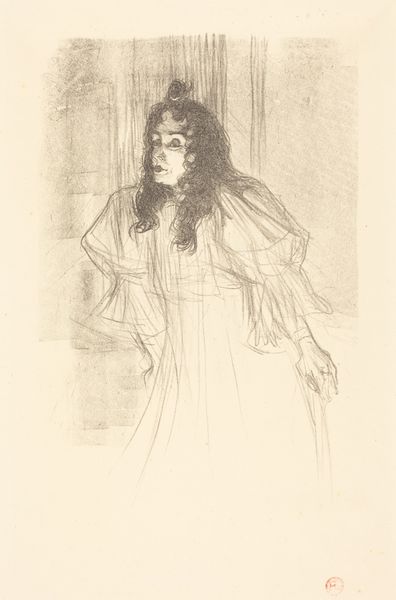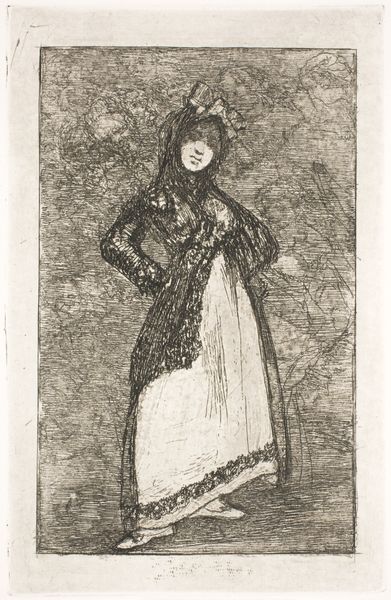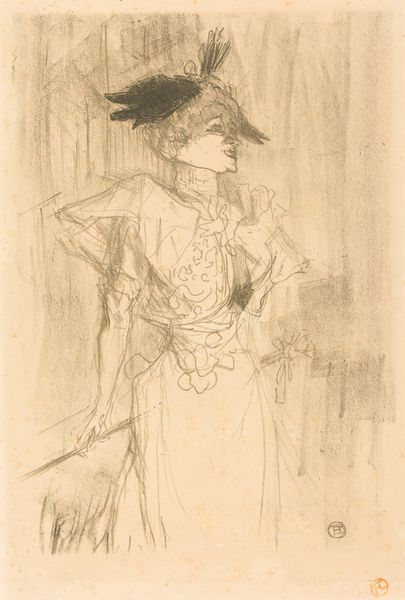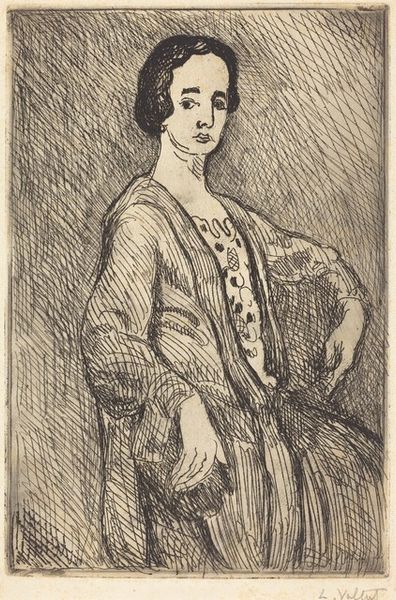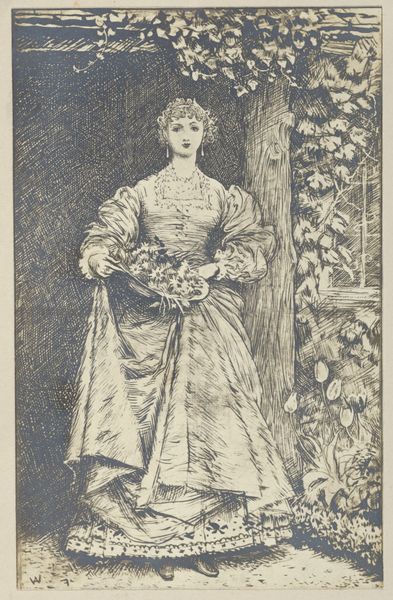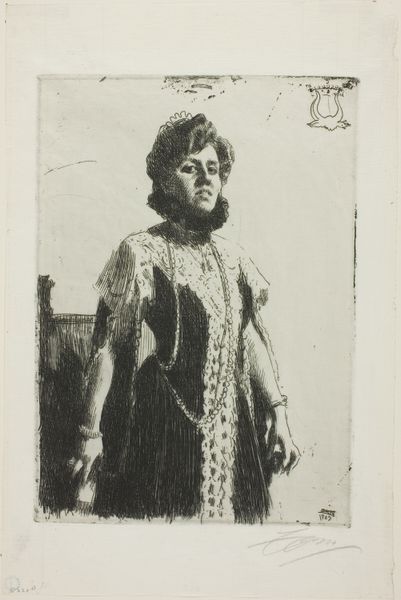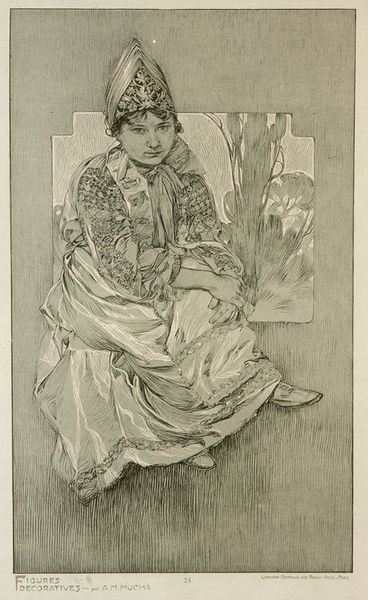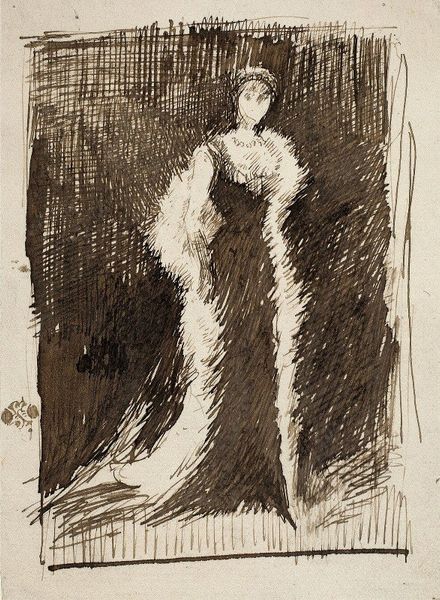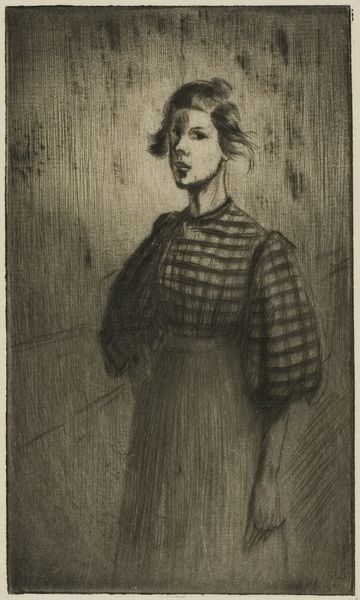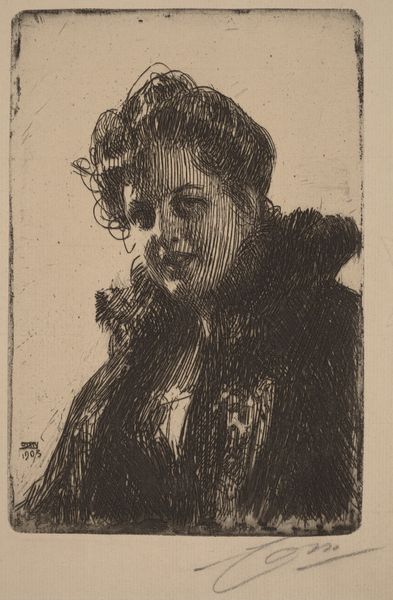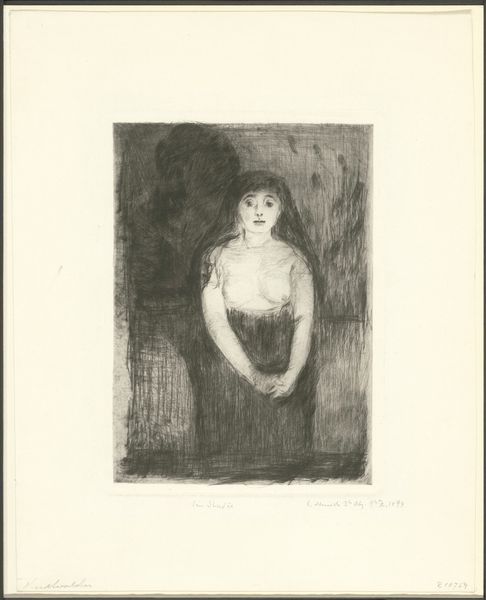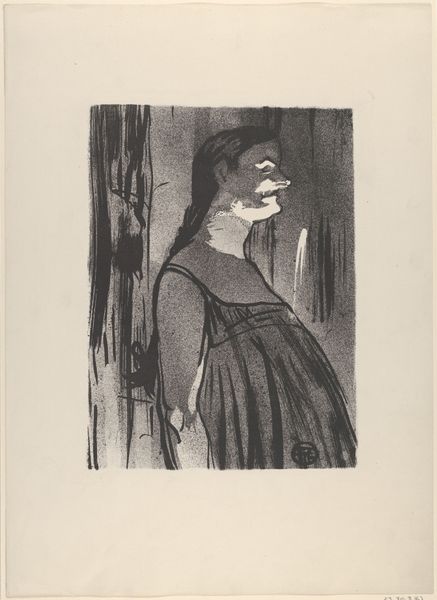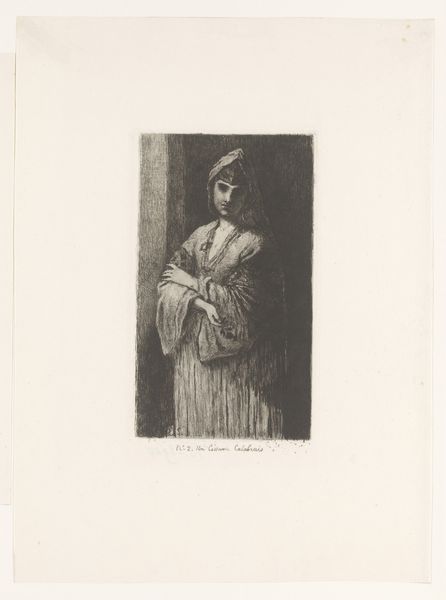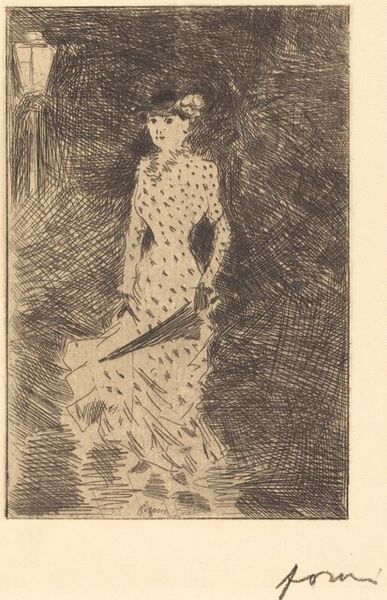
drawing, print, paper, charcoal
#
portrait
#
drawing
# print
#
charcoal drawing
#
paper
#
surrealism
#
symbolism
#
charcoal
#
history-painting
#
charcoal
#
surrealism
#
erotic-art
Dimensions: 335 × 225 mm (image); 385 × 256 mm (plate); 452 × 311 mm (sheet)
Copyright: Public Domain
Felicien Rops created this print called "The Absinthe Drinker" using the soft ground etching technique sometime in the late 19th century. The image depicts a woman standing next to a pillar that seems to be part of a dance hall. This was a time when Paris was rapidly modernizing, offering new freedoms to the middle class, but also a time when traditional social structures and expectations were increasingly in flux. Absinthe drinking became associated with bohemian culture and was seen by some as a symbol of social decay. Rops was an artist with decidedly anti-establishment views. Although this print has been interpreted in many ways, the woman’s direct gaze challenges viewers to question their own assumptions about class and gender at a time when institutionalized social norms were in transition. To fully understand this image, scholars consult not only the writings of the artist, but also social histories of the time. Only through the study of cultural context can the politics of imagery be truly understood.
Comments
No comments
Be the first to comment and join the conversation on the ultimate creative platform.
